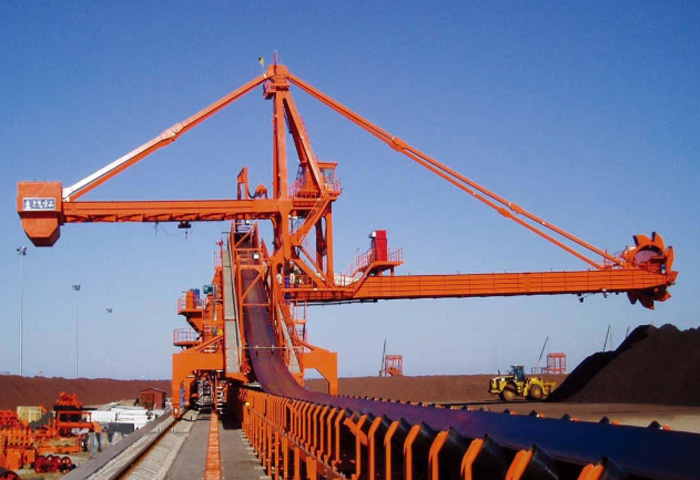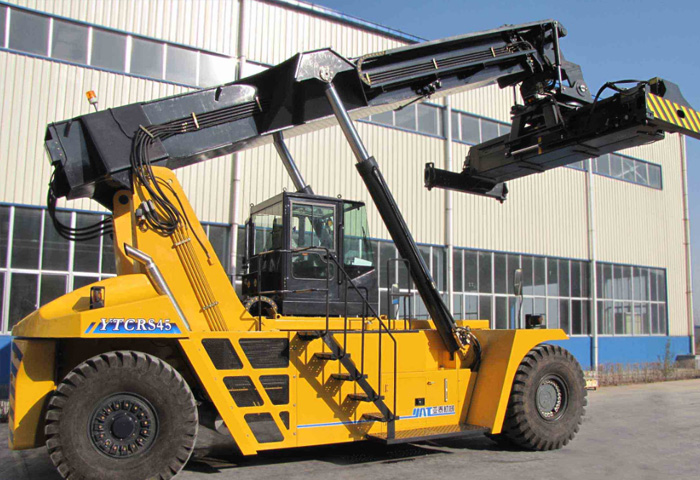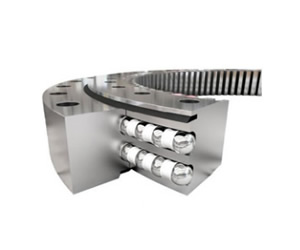
Unlock Top Speed: Understanding Pinion Gears and Their Impact on Your Ride
2025-01-17
Have you ever wondered how a small change in a tiny part can make a huge difference in performance? We’re diving deep into the world of pinion gears, those seemingly insignificant cogs that play a vital role in determining speed, power, and overall efficiency in various mechanical systems. Whether you’re a hobbyist tinkering with RC cars or an engineer designing heavy machinery, understanding the relationship between pinion gear size and its impact is crucial. This article will break down the fundamentals, explore the practical applications, and help you grasp how these unassuming components can dramatically alter the performance of your equipment. Get ready to shift your knowledge into high gear!
Diving Deep into Pinion Gear Mechanics
1. What Exactly is a Pinion Gear and Why is its Tooth Count So Important?
At its core, a pinion gear is a smaller, usually cylindrical gear that meshes with a larger gear, often referred to as a spur gear. Think of it as the primary driver in a gear system. The magic of a pinion gear lies in its tooth count. This seemingly simple number has a profound impact on the overall gear ratio of the system. The gear ratio is the relationship between the number of teeth on the driven gear (the larger gear) and the number of teeth on the driving gear (the pinion). For instance, if a pinion has 20 teeth and the gear it meshes with has 40 teeth, the ratio is 2:1.
Why is this ratio so significant? Because it dictates the trade-off between speed and torque. A higher ratio (larger driven gear relative to the pinion) provides more torque but less speed, while a lower ratio (smaller driven gear relative to the pinion) delivers higher speed but less torque. In simpler terms, the pinion gear acts as a lever, and its tooth count determines how much leverage is applied. This mechanical advantage is fundamental to countless applications, from the intricate mechanisms within a watch to the powerful drive systems of construction equipment. Consider the smooth rotation provided by well-matched gears in a slewing gear system, where precise movement is paramount.
2. Smaller Pinion vs. Larger Pinion: How Does This Affect Your Top Speed?
Imagine you’re trying to pedal a bicycle up a steep hill. You’d likely shift to a smaller gear in the front (the equivalent of a smaller pinion) to make pedaling easier, even if it means going slower. Conversely, on a flat road, you’d shift to a larger gear (larger pinion) to cover more distance with each pedal stroke, increasing your speed. The same principle applies to mechanical systems using pinion gears.
A smaller pinion, with fewer teeth, will cause the larger gear to rotate more times for each rotation of the pinion. This translates to higher rpm for the driven component but lower overall speed for the system as a whole if you consider the output shaft’s rotational speed. On the flip side, a larger pinion, with more teeth, forces the larger gear to rotate less for each rotation of the pinion. This results in a lower rpm for the driven component but a higher overall top speed. Think of it like this: a larger pinion "pulls" more of the driven gear with each turn. If you’re aiming for higher top, using a larger pinion is often the go-to adjustment, provided your motor has enough power to handle the increased load. This is crucial in applications where rapid movement is essential. For example, consider the high top speed requirements for certain robotic applications.

3. More Than Just Speed: What Role Does the Pinion Gear Play in Torque and Acceleration?
While top speed is often a key metric, it’s only one part of the performance puzzle. The pinion gear also significantly influences torque and acceleration. As mentioned earlier, a smaller pinion provides a higher gear ratio, which translates to increased torque. This means the system will have more rotational force available to overcome resistance. This is why you’d use a smaller pinion when you need more power to get things moving or to handle heavy loads. Think of construction equipment like excavators. Their slewing ring bearings need to withstand immense forces, and the gearing systems, including the pinion gear, are designed for high torque applications.
Conversely, a larger pinion results in a lower gear ratio and less torque. While this might seem like a disadvantage, it allows for quicker acceleration at higher speeds, once the initial inertia is overcome. However, starting from a standstill or accelerating under a heavy load will be more challenging with a larger pinion due to the reduced torque. Finding the optimal balance between top speed and acceleration often involves experimenting with different tooth combinations to suit the specific application and the capabilities of the motor. If your goal is rapid acceleration, a smaller pinion is generally preferred.
4. Can a 20 Teeth Pinion Unleash Maximum Velocity?
A 20 teeth pinion represents a move towards higher speed. Whether it "unleashes maximum velocity" depends entirely on the context and the other components in the system. In an RC car, upgrading to a 20 teeth pinion from a smaller one (like a 2 teeth pinion – though that’s exceptionally small and more illustrative) will likely result in a noticeable increase in top speed. The motor will spin the wheels faster for each rotation. However, this comes at the cost of reduced acceleration and potentially increased strain on the motor.
In larger industrial applications, a 20 teeth pinion would be chosen based on the specific speed and torque requirements of the machinery. It wouldn’t necessarily represent "maximum velocity" but rather a design choice optimized for a particular operating range. The effectiveness of a 20 teeth pinion also depends on the size of the spur gear it’s meshing with. A 20 teeth pinion paired with a much larger gear will still have a high gear ratio, prioritizing torque over speed, while a 20 teeth pinion with a smaller spur gear will lean towards higher speed. The tooth combination is key.

5. What Happens When You Use a Pinion Gear with Fewer Teeth?
Switching to a tooth pinion with fewer teeth has the opposite effect of using a larger pinion. The immediate impact is an increase in the gear ratio. This means more torque is available, making it easier to accelerate from a stop and handle heavier loads. Imagine an electric off-road vehicle struggling on an incline. Changing to a tooth pinion would with fewer teeth would provide the necessary torque to conquer the hill, albeit at a lower top speed.
However, there are trade-offs. The top speed of the system will decrease because the driven gear rotates fewer times for each rotation of the pinion. This might be desirable in situations where precise control and power are more important than speed, such as in robotic arms or certain types of industrial machinery. Using a smaller pinion can also potentially reduce the strain on the motor in high-load situations, as the higher gear ratio provides more mechanical advantage. Think of it as giving the motor more leverage.
6. Beyond RC Cars: Where Else Are Pinion Gears Commonly Found?
While often discussed in the context of RC models, pinion gears are ubiquitous in mechanical systems across various industries. Their ability to efficiently transfer power and alter speed and torque makes them indispensable. Here are some common applications:
- Automotive Transmissions: Pinion gears are integral to the complex gear sets within car transmissions, enabling smooth shifting and efficient power delivery to the wheels.
- Machine Tools: Drilling machines, lathes, and milling machines utilize pinion gears for precise control of spindle speed and feed rates.
- Industrial Gearboxes: Heavy machinery, including conveyors, mixers, and pumps, rely on robust gearboxes containing pinion gears to reduce motor speed and increase torque.
- Wind Turbines: The gearboxes in wind turbines employ pinion gears to convert the slow rotation of the blades into the high rpm needed to generate electricity.
- Slewing Drives and Bearings: As a factory specializing in slewing ring bearings, we understand the critical role of pinion gears in slewing gear mechanisms. These gears are essential for rotating large structures like crane booms, radar antennas, and wind turbine nacelles. The gear ratio determined by the pinion ensures the necessary torque and controlled movement. Our Single Row -Ball Bearing Slewing Rings, Single Row- Rollers Bearing Slewing Rings, and other bearing types often integrate with pinion gear systems.
- Medical Equipment: The precise movements required in medical imaging devices like CT scanners and MRI machines often rely on pinion gears within their drive systems.

7. Matching the Right Pinion Gear: What Factors Should You Consider?
Selecting the appropriate pinion gear is crucial for optimal performance and longevity of the mechanical system. Here are key factors to consider:
- Desired Speed and Torque: This is the primary consideration. Do you need high top speed or strong torque? This will dictate whether you need a larger pinion or a smaller pinion.
- Motor Characteristics: The motor’s power output and rpm range are critical. A more powerful motor can handle a larger pinion more effectively.
- Load Requirements: Heavier loads necessitate higher torque, which might require a smaller pinion.
- Operating Environment: Consider factors like temperature and potential for debris. Proper lubrication and sometimes enclosed gearboxes are necessary.
- Gear Pitch: The pitch of the pinion gear must match the pitch of the spur gear it meshes with. Incorrect pitch will lead to improper meshing and damage.
- Material and Durability: The pinion gear should be made of a material strong enough to withstand the operating forces. For heavy-duty applications, hardened steel is often used. We ensure our slewing gear components meet stringent quality standards for robust construction and long service life.
- Backlash: The amount of play between the teeth of meshing gears (backlash) needs to be considered. Too much backlash can lead to noise and wear, while too little can cause binding.
8. Where Can You Find Top Posts and Discussions About Pinion Gear Setups?
For hobbyists and engineers alike, online communities and forums are valuable resources for information and advice on pinion gear setups. Here are some places to look:
- RC Forums: Websites dedicated to radio-controlled vehicles often have extensive discussions on gearing, including pinion gear selection and its impact on performance. You can find top posts with recommended setups for various models and driving styles.
- Engineering Forums: Platforms where engineers discuss mechanical design and power transmission often feature threads on gear selection and gear ratio calculations.
- Reddit: Subreddits related to RC cars, robotics, and engineering can be goldmines for information. Searching for terms like "pinion gear," "gear ratio," or specific RC model names can yield helpful discussions. Remember that reddit is anonymous, so always cross-reference information.
- Manufacturer Websites and Manuals: Manufacturers of RC vehicles and industrial equipment often provide guidance on recommended pinion gear sizes and tooth combination for optimal performance.
- Exhibitions: Attending industry exhibitions, like those where we showcase our slewing ring bearings, provides opportunities to discuss pinion gear applications with experts and other professionals.
9. Common Pitfalls: Mistakes to Avoid When Working with Pinion Gears
While seemingly simple, working with pinion gears can present challenges if certain precautions aren’t taken. Here are some common mistakes to avoid:
- Incorrect Pitch Matching: Using a pinion gear with a different pitch than the spur gear will lead to rapid wear and damage.
- Improper Mesh Adjustment: Failing to adjust the backlash correctly can cause noise, excessive wear, or binding.
- Over-Gearing: Using a huge pinion or a tooth number that’s too large for the motor and application can overload the motor, leading to overheating and premature failure. Always monitor the temp of your motor.
- Insufficient Lubrication: Gears require proper lubrication to reduce friction and wear. Neglecting lubrication will significantly shorten their lifespan.
- Using Worn or Damaged Gears: Inspect gears for wear or damage before installation. Using worn gears will negatively impact performance and can damage other components.
- Ignoring Load Limits: Ensure the chosen pinion gear and gear are rated for the expected load. Exceeding load limits can cause gear failure.
- Forgetting Mechanical Compatibility: Ensure the shaft diameter of the motor matches the cavity in the pinion gear.
10. Looking Ahead: The Future of Pinion Gear Technology and Applications
The future of pinion gear technology is focused on improving efficiency, durability, and precision. Advancements in materials science are leading to the development of lighter and stronger gear materials. Improved manufacturing techniques are enabling the production of gears with tighter tolerances and smoother surfaces, reducing friction and noise.
In terms of applications, we can expect to see pinion gears playing an increasingly important role in emerging technologies:
- Robotics: As robots become more sophisticated, the demand for precise and efficient gear systems will continue to grow.
- Electric Vehicles: Pinion gears will be crucial in the development of efficient and compact transmissions for electric vehicles.
- Renewable Energy: Wind turbine technology will continue to rely on advanced gearbox designs incorporating high-performance pinion gears.
- Advanced Manufacturing: High-precision machining and automation will depend on gear systems with exceptional accuracy and reliability.
Understanding the principles and applications of pinion gears is essential for anyone involved in mechanical design, manufacturing, or even hobbyist pursuits. From the smaller pinion offering higher torque to the larger pinion enabling greater speed, these components are fundamental to how we transmit power and control motion in countless machines. As a company specializing in slewing ring bearings, Xinda understands the importance of every component in a rotating system, and the pinion gear is a key player in many of these applications. If you would like to know more about how our bearings integrate with gear systems, please don’t hesitate to verify your email and check your inbox for our contact information.
- Key Takeaway 1: The pinion gear’s tooth count directly influences the gear ratio, impacting speed and torque.
- Key Takeaway 2: A smaller pinion increases torque and acceleration but reduces top speed.
- Key Takeaway 3: A larger pinion increases top speed but reduces torque and acceleration.
- Key Takeaway 4: Proper matching of gear pitch and careful adjustment of backlash are crucial for gear system longevity.
- Key Takeaway 5: Pinion gears are found in a vast array of applications beyond RC cars, including automotive transmissions, industrial machinery, and slewing drives.





